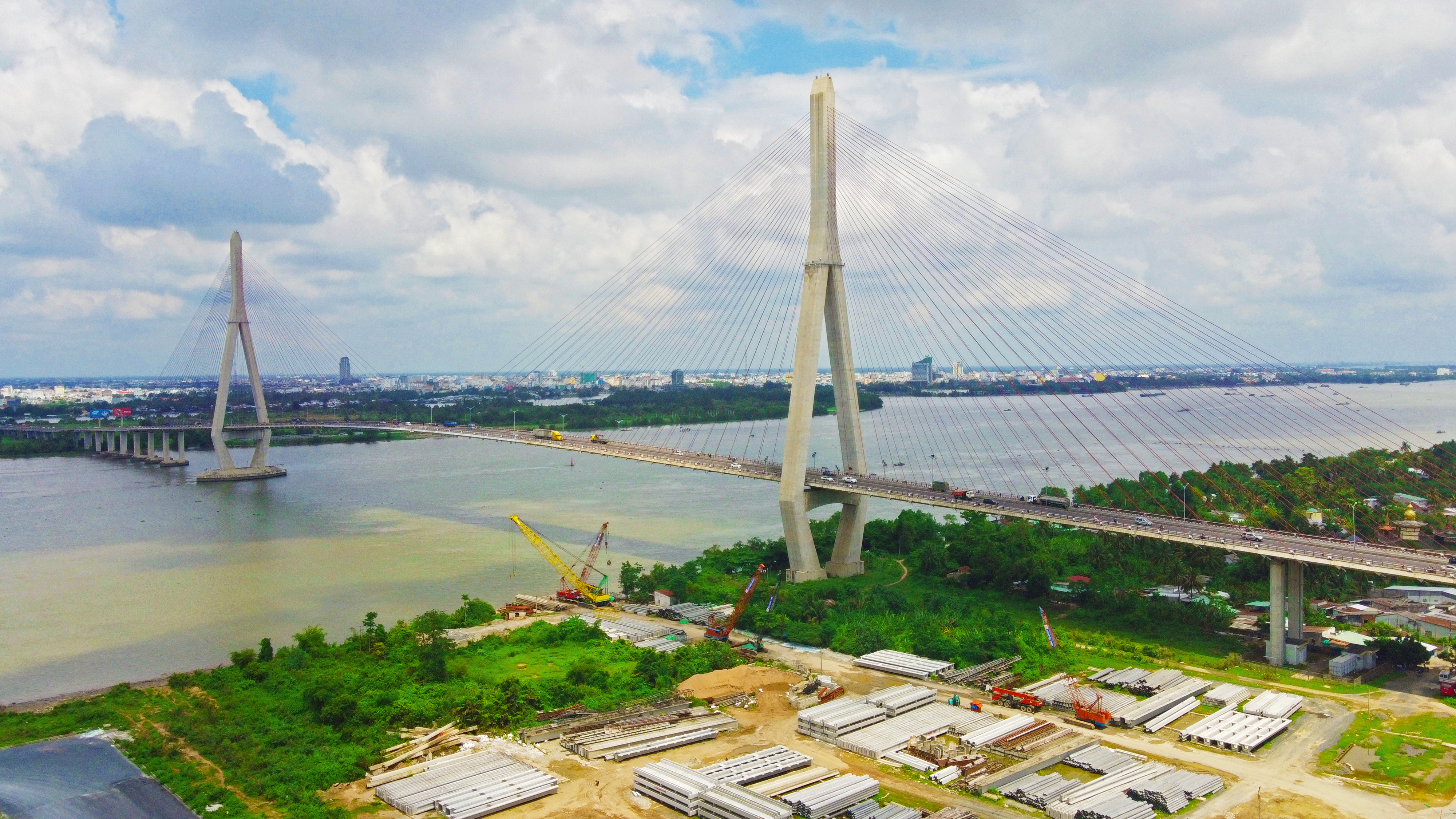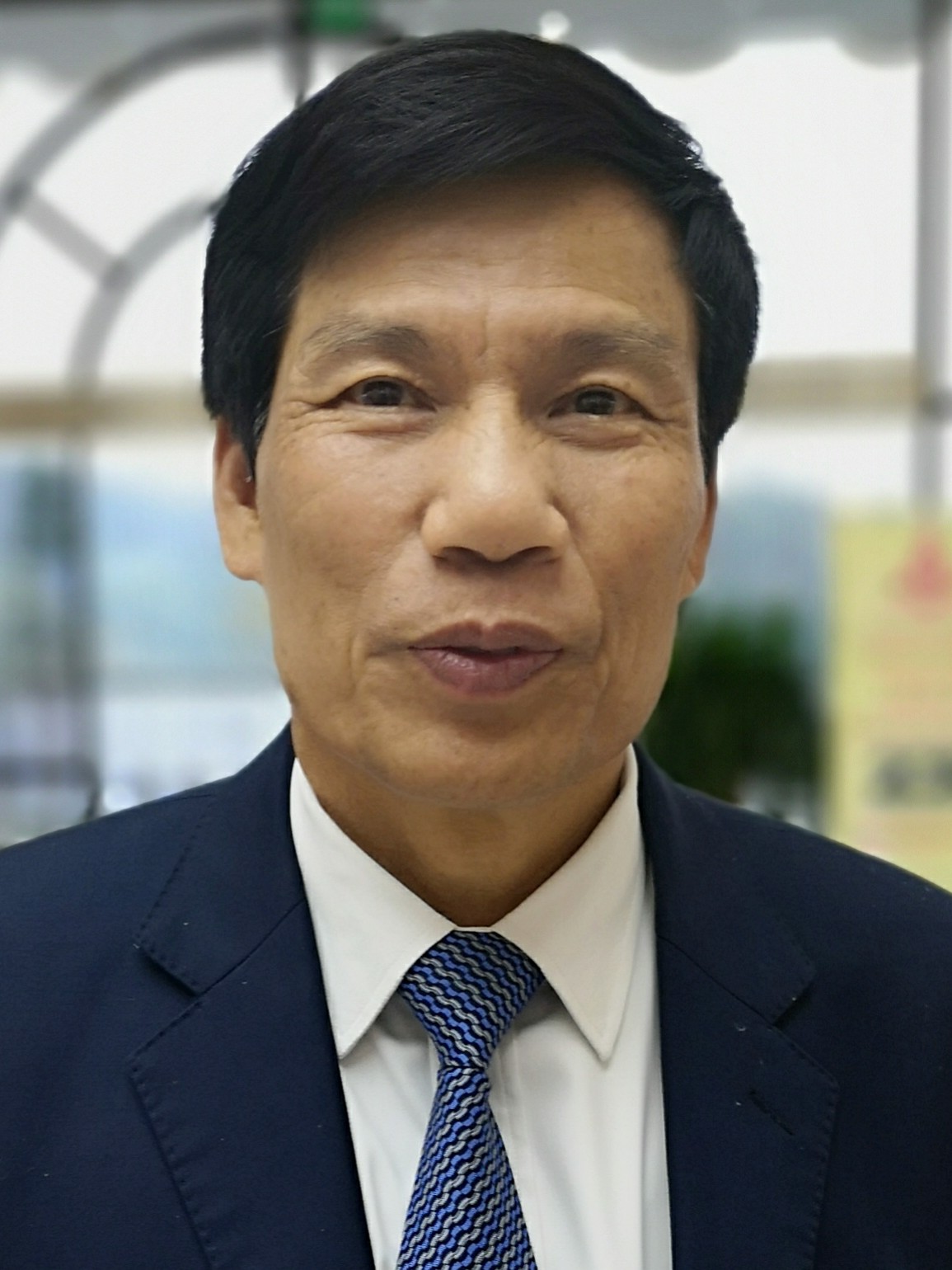|
Cái Răng Floating Market
Cái Răng Floating Market, also written as Cai Rang Floating Market, is a wholesale floating market specializing in the trade of vegetables and fruits on the Bassac River, Hau River, and is a unique tourist attraction in the Cái Răng district in Cần Thơ, Vietnam.With a history dating back to the early 20th century, the market emerged as a crucial trading hub. Before the development of roads and bridges, the myriad waterways of the delta region were the primary means of trade and transport, leading to the development of floating markets where channels converged. In 2016, Cái Răng Floating Market was recognized as a national intangible cultural heritage by the Ministry of Culture, Sports and Tourism (Vietnam), Ministry of Culture, Sports, and Tourism of Vietnam. Location The market is located on the Hau River, near Cái Răng Bridge, about 7 kilometers from the center of Can Tho. Visitors can reach the floating market in two ways: either by renting a boat at Ninh Kieu Whar ... [...More Info...] [...Related Items...] OR: [Wikipedia] [Google] [Baidu] |
Floating Market
A floating market is a market (place), market where goods are sold from boats. Originating in times and places where water transport played an important role in daily life, most floating markets operating today mainly serve as tourist attractions, and are chiefly found in Myanmar, Thailand, Indonesia, Vietnam, Sri Lanka, Bangladesh, and India. Bangladesh The 200-year-old floating market at Kuriana in Swarupkati has become a tourist spot. Guava floating market is a unique market. Hundreds of tourists from home and abroad visit the place every day to enjoy the beauty of the market and its surrounding landscape. Thailand In Thailand, floating markets ( ) are well supported locally and mainly serve as tourist attractions. One of their purposes is to allow Domestic tourism, domestic visitors and International tourism, international tourists to be able to experience the culture of riverside shopping. History Historically, the areas adjacent to the rivers were the first to b ... [...More Info...] [...Related Items...] OR: [Wikipedia] [Google] [Baidu] |
Bassac River
The Bassac River (; Tonlé Bassac) or Hậu River ( 瀧後 or 後江) is a distributary of the Tonlé Sap and Mekong River. The river starts in Phnom Penh, Cambodia, and flows southerly, crossing the border into Vietnam near Châu Đốc. The name ''Bassac'' comes from the Khmer prefix ''pa'' ("father" or "male") added to ''sak'' (សក្តិ) ("power, honor"), a Khmer word borrowed from the Sanskrit ''sakti'' (शक्ति). The Bassac River is an important transportation corridor between Cambodia and Vietnam, with barges and other craft plying the waters. A city of the same name was once the west-bank capital of the Kingdom of Champasak. ''Sak'' (សក្តិ) can also be seen in the Khmer spelling of Champasak: ចំប៉ាសក្តិ. USS ''Satyr'' (ARL-23), a recommissioned repair ship originally built for the United States Navy during World War II, served on the Bassac River during the Vietnam War. Three bridges span the Bassac: the Monivong and ... [...More Info...] [...Related Items...] OR: [Wikipedia] [Google] [Baidu] |
Cần Thơ
Cần Thơ () is the List of cities in Vietnam, fourth-largest city in Vietnam, and the largest city along the Mekong Delta region in Vietnam. It is noted for its floating markets, rice paper-making village, and picturesque rural canals. It has a population of around 1,507,187 as of 2024, and is located on the south bank of the Hậu River, a distributary of the Mekong River. In 2007, about 50 people died when the Cần Thơ Bridge Collapse of Cần Thơ Bridge, collapsed, causing Vietnam's worst engineering disaster. In 2011, Cần Thơ International Airport opened. The city is nicknamed the "Mekong Delta, Western Metropolis" (), and is located from Hồ Chí Minh City. History During the Vietnam War, Cần Thơ was the home of the Army of the Republic of Vietnam, ARVN IV Corps capital. The 21st Division (South Vietnam), ARVN 21st division was dedicated to protect the city of Cần Thơ, including the provinces of Chương Thiện (now in Hậu Giang), Bạc Liêu, An Xuyen ... [...More Info...] [...Related Items...] OR: [Wikipedia] [Google] [Baidu] |
Vietnam
Vietnam, officially the Socialist Republic of Vietnam (SRV), is a country at the eastern edge of mainland Southeast Asia, with an area of about and a population of over 100 million, making it the world's List of countries and dependencies by population, fifteenth-most populous country. One of two communist states in Southeast Asia, Vietnam shares land borders with China to the north, and Laos and Cambodia to the west. It shares Maritime boundary, maritime borders with Thailand through the Gulf of Thailand, and the Philippines, Indonesia, and Malaysia through the South China Sea. Its capital is Hanoi and its largest city is Ho Chi Minh City. Vietnam was inhabited by the Paleolithic age, with states established in the first millennium BC on the Red River Delta in modern-day northern Vietnam. Before the Han dynasty's invasion, Vietnam was marked by a vibrant mix of religion, culture, and social norms. The Han dynasty annexed Northern and Central Vietnam, which were subs ... [...More Info...] [...Related Items...] OR: [Wikipedia] [Google] [Baidu] |
Ministry Of Culture, Sports And Tourism (Vietnam)
The Ministry of Culture, Sports and Tourism () is the government ministry in Vietnam responsible for state administration on culture, family, sports and tourism nationwide; in addition to the management of public services in those field. The ministry was founded in 2007 after the merger of the ''Committee of Physical Training and Sports of Vietnam'', ''General Department of Tourism'', and Culture section from the ''Ministry of Culture and Information''. Ministerial units * Department of Familial Affairs * Department of Traditional Culture * Department of Library * Department of Science, Technology and Environment * Department of Training * Department of Legislation * Department of Planning and Finance * Department of International Cooperation * Department of Organisation and Personnel * Ministry's Inspectorate * Ministry's Office * Vietnam National Authority of Tourism * Sports Authority of Viet Nam * Agency for Fine Arts, Photography and Exhibition * Agency for International ... [...More Info...] [...Related Items...] OR: [Wikipedia] [Google] [Baidu] |
Mekong Delta
The Mekong Delta ( or simply ), also known as the Western Region () or South-western region (), is the list of regions of Vietnam, region in southwestern Vietnam where the Mekong, Mekong River River delta, approaches and empties into the sea through a network of distributary, distributaries. The Mekong delta region encompasses a large portion of south-western Vietnam, of an area of over . The size of the area covered by water depends on the season. Its wet coastal geography makes it an important source of agriculture and aquaculture for the country. The delta has been occupied as early as the 4th century BC. As a product of Khmer people, Khmer, Vietnamese people, Vietnamese, Chinese, and French colonial empire, French settlement in the region, the delta and its waterways have numerous names, including the Khmer language, Khmer term Bassac River, Bassac to refer to the lower basin and the largest river branch flowing through it. After the 1954 Geneva Conference, Vietnam was split ... [...More Info...] [...Related Items...] OR: [Wikipedia] [Google] [Baidu] |
Lunar New Year
Lunar New Year is the beginning of a new year based on lunar calendars or, informally, lunisolar calendars. Lunar calendar years begin with a new moon and have a fixed number of lunar months, usually twelve, in contrast to lunisolar calendar years which have a variable number of lunar months that periodically resynchronise with the solar year. The event is celebrated by numerous cultures in various ways at different dates. The determination of the first day of a new lunar year or lunisolar year varies by culture. Better-known lunar new year celebrations include that based on the (lunar) Islamic calendar which originated in the Middle East. Lunisolar new year celebrations include that of the (lunisolar) Hebrew calendar from same region; the (lunisolar) Chinese calendar and Tibetan calendar of East Asia; and the (lunisolar) Buddhist and Hindu calendars of South and Southeast Asia. In 2023, the United Nations General Assembly recognized the Spring Festival that coincides with ... [...More Info...] [...Related Items...] OR: [Wikipedia] [Google] [Baidu] |
Tết Đoan Ngọ
Tết Đoan Ngọ is the Vietnamese version of Chinese Duanwu festival (literally: Tết: festival, Đoan: the start/straight/middle/righteousness/just, Ngọ: at noon (from 11 am to 1 pm). Đoan Ngọ is the moment that the sun is the most near the earth and this day often is "The middle day of summer" (Hạ chí). In Vietnam, this day is also the death anniversary of National Mother Âu Cơ. Compared to Cantonese Chinese term "dyun eng" (which is duan wu in Mandarin Chinese) ngo/eng/wu all refer to the ancient Chinese calendar term: the seventh of the twelve Earthly Branches, which was a component for determining time based on a series of 60 years (just as today we refer to 100 year periods as centuries).) Ngo/eng/wu refers to the sun at noon. : Tết Đoan Dương (Dương: yang) - yang being sun : Tết Trùng Ngũ (Trùng: double, Ngũ: the fifth), : Tết Đoan Ngũ, Tết Trùng Nhĩ or Tết Nửa Năm (Nửa Năm: a half of a year) is a festival celebrated at noon o ... [...More Info...] [...Related Items...] OR: [Wikipedia] [Google] [Baidu] |


